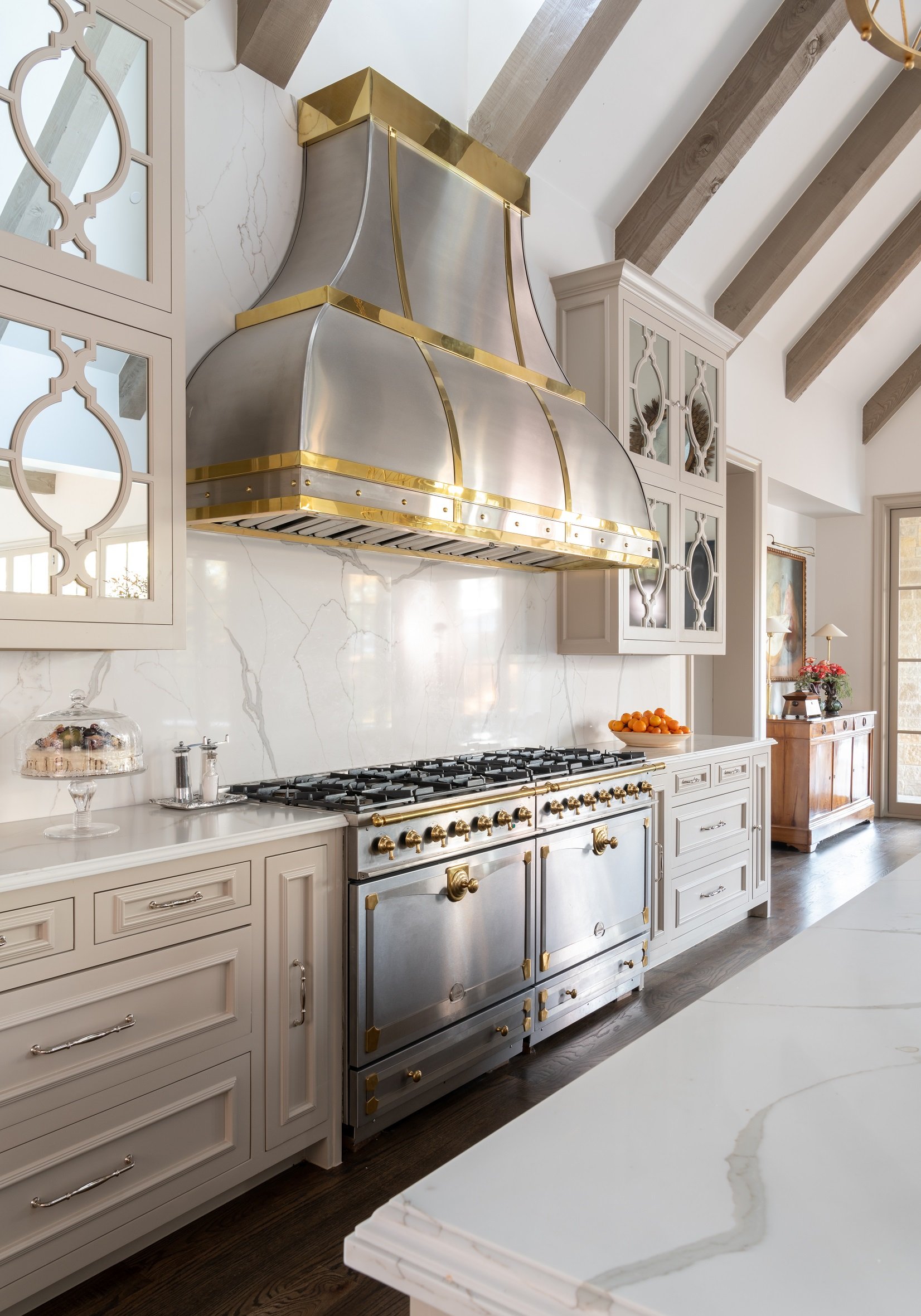Always a classic choice for traditional architecture, brass hardware is trendy right now. For this Colleyville remodel, we used brass hardware to bring it up-to-date.
Hardware is often described as the “jewelry of the home,” but it’s more than just an accessory to your interior design. Hardware is something that you’ll be looking at and putting your hands on every day, so it needs to be both stylish and comfortable to use.
However, finding the right hardware isn’t always easy. There are many different shapes, styles, and finishes to choose from, and not all of them will look flattering in your home. Here are some things I as a designer consider when I’m helping a client choose their hardware for a new house or remodel.
Brass hardware and white-painted cabinetry are an appealing combination.
1. Make a List of Everything You Need
To begin, go through and count how many new handles, knobs, pulls, hinges, and faucets you will need in total. Determine your budget and how large you want the new hardware to be. Don’t forget to stop and think about how you want the hardware to feel, too. Whenever possible, try out samples at the hardware store so you can see how they fit your hand. It doesn’t matter how beautiful the hardware is if it’s cumbersome to use.
2. Learn About the Different Kinds of Hardware Available
If you’re updating your interior door handles, your two main choices are levers and knobs. Levers are usually used in contemporary homes, while knobs are great in traditional and transitional style homes. Keep in mind that knobs are more difficult to handle for those with mobility issues, the elderly, and young children. Knobs, unlike levers, can be easily child-proofed.
You should also make a note of which doors will need locks. Passage knobs are for doors that don’t need to be locked. Privacy knobs lock on one side, while keyed entry knobs lock from both sides. Dummy knobs don’t have any moving parts, meaning they don’t turn and click. They’re usually used for closet doors and pantries.
We chose hardware with a satin brass finish (seen here) for this Dallas remodel, as well as a satin nickel finish for the faucets in the main kitchen. This project was designed in collaboration with Helene's Luxury Kitchens.
Photo courtesy of First Showing Photography
As far as style goes, traditional homes usually look best with hardware that has rounded curves and intricate details instead of sharp angles. Meanwhile, simple, angular hardware is suited for contemporary interior design. These days, I see modern kitchens using very long drawer handles. Pot fillers have been a fad the last five years, but I try to steer my clients away from them. They distract from the cooktop and backsplash, so I think they’re a fad that won’t last.
3. Pick Up to Four Finishes to Use Throughout the Home
Believe it or not, it’s perfectly acceptable to mix finishes. The ideal range is three to four finishes in a home, with no more than two different finishes per room. If your heart is set on a door handle finish that looks good in one room but not the next, look into getting a “split finish,” in which the handle has a different finish on either side.
Your hardware finish choices should reflect your home’s style of architecture. For example, I would use oil-rubbed bronze in an Italian home, brass in a French, English, or Federal home, and either satin nickel or chrome in a contemporary home. Brass, by the way, is having a huge comeback. Another trendy finish that designers have been using the last few years is matte black.
To choose a complementary finish for your doors and cabinets, focus on color temperature. If your doors are painted a warm white, you should choose doorknobs with a warm finish, such as brass, polished nickel, or oil-rubbed bronze. If your doors are painted a cool color, like cool gray, I recommend hardware with a cool finish, like chrome. Remember that your hardware should also complement your light fixtures, especially your sconces.
This kitchen is an example of how to combine mixed metals effectively. The hardware is polished nickel, the pendant chandeliers are brass, and the vent hood is made of steel and brass.
Since hardware is situated at the front and center of all your doors and cabinetry, when in doubt, pick a style that is simple and timeless. If this is your first time choosing your own hardware, you may want to reach out to a designer like myself. With almost every job, I have to select and place the hardware, so I have a lot of experience mixing different styles and finishes in a single home. If you're interested in working with me and my design firm, call our Dallas office at 214-651-7665 or send an email to info@chambersinteriors.com.









